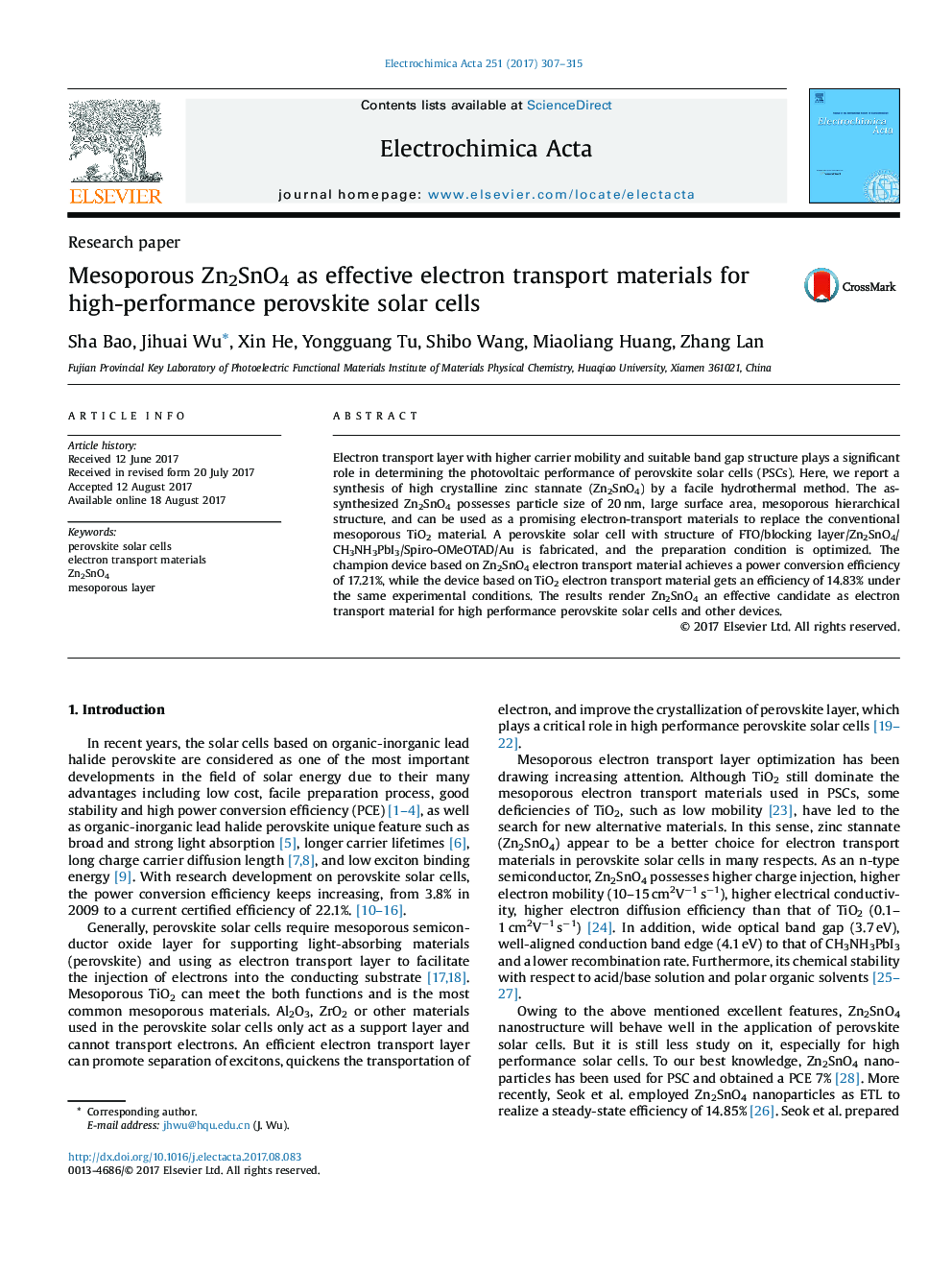| Article ID | Journal | Published Year | Pages | File Type |
|---|---|---|---|---|
| 6469917 | Electrochimica Acta | 2017 | 9 Pages |
â¢Large grain and mesoporous Zn2SnO4 are synthesized by a facile hydrothermal method.â¢Perovskite device with Zn2SnO4 electron transport layer get efficiency of 17.21%.â¢While the device with TiO2 electron transport layer obtain an efficiency of 14.83%.â¢Superior photovoltaic performance stems from the intrinsic characteristics of Zn2SnO4.
Electron transport layer with higher carrier mobility and suitable band gap structure plays a significant role in determining the photovoltaic performance of perovskite solar cells (PSCs). Here, we report a synthesis of high crystalline zinc stannate (Zn2SnO4) by a facile hydrothermal method. The as-synthesized Zn2SnO4 possesses particle size of 20Â nm, large surface area, mesoporous hierarchical structure, and can be used as a promising electron-transport materials to replace the conventional mesoporous TiO2 material. A perovskite solar cell with structure of FTO/blocking layer/Zn2SnO4/CH3NH3PbI3/Spiro-OMeOTAD/Au is fabricated, and the preparation condition is optimized. The champion device based on Zn2SnO4 electron transport material achieves a power conversion efficiency of 17.21%, while the device based on TiO2 electron transport material gets an efficiency of 14.83% under the same experimental conditions. The results render Zn2SnO4 an effective candidate as electron transport material for high performance perovskite solar cells and other devices.
